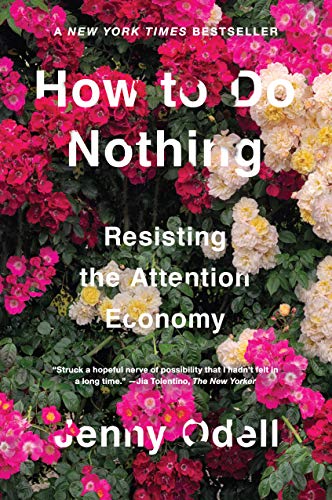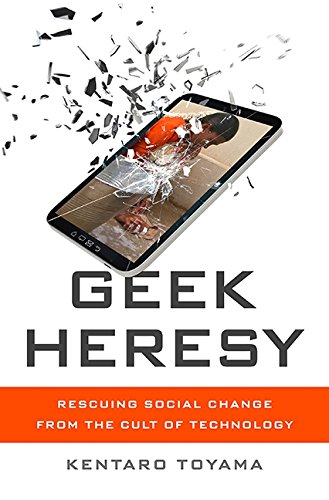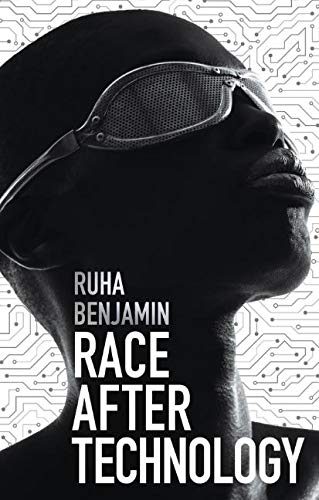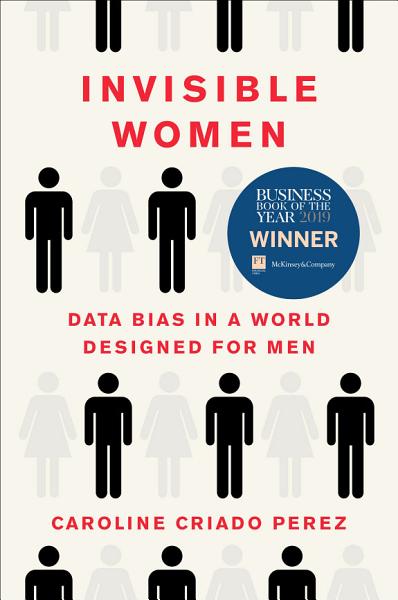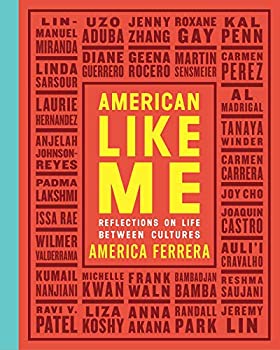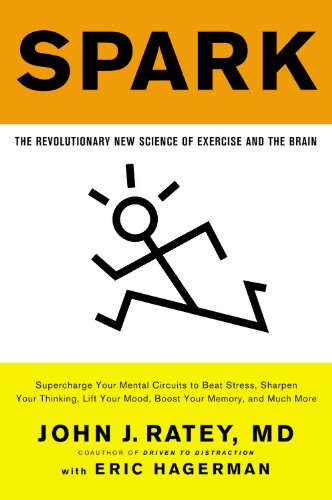Summer 2020 Book Recommendations from Our Graduate Students – part I
Allie Lahnala (2nd year PhD student) recommends:
From my 2020 reads, I recommend “How to Do Nothing: Resisting the Attention Economy” (2019) by Jenny Odell, “Geek Heresy: Rescuing Social Change from the Cult of Technology” (2015) by Kentaro Toyama (who is a professor in University of Michigan’s School of Information), and “Race After Technology: Abolitionist Tools for the New Jim Code” (2019) by Ruha Benjamin.
While the books and their authors’ voices are quite different, the core themes connect and enhance each other in thought-provoking ways. Each book in some way attempts to combat the framing that productivity means creating something new (e.g., novel technology meant to correct social injustices), and offers ways to consider actions that are reparative, regenerative, and nurturing to be productive instead (e.g., social support systems and policy changes).
My year of books began with “How to Do Nothing,” which elicited both existential amusement and a healthy form of existential crisis. Jenny Odell proposes a seemingly paradoxical practice of doing nothing as an active process, one that challenges our notions of productivity and emphasizes stopping to seek out “the effects of racial, environmental, and economic injustice” to elicit real change (pg. 22). My favorite chapter, “The Anatomy of Refusal”, relates tales of quirky philosophers and performance artists whose minor refusals of societal norms invoked disruptive perplexity from others; it also recounts histories of social activism during the civil rights and labor movements that required collective and sustained concentration. Through these stories, the author paints a picture of what it means to “pay attention” at an individual and collective level in such a way that allows for the mobilization of movements (pg. 81). What resonated with me most about this chapter were the histories of activism powered by university students and faculty, such as the 1960 Greensboro sit-in in which participating students were “under the care of black colleges, not at the mercy of white employers” (pg. 83), which demonstrate the positions that academic institutions can afford to be in when it comes to taking activist risks.
Similarly, in “Geek Heresy,” Kentaro Toyama discusses mentorship as a more productive form of activism than novel technical packaged interventions, which are often ill-suited to the problems they intend to address, but nonetheless are idealized by technologists. Mentorship, he argues, is often neglected by policymakers and donor organizations, though it “works well as an overarching framework that avoids the problems of top-down authority, benevolent paternalism, or pretended equality (pg. 240).” The core themes of “Geek Heresy” emphasize nurturing people and social institutions as a means toward fighting inequality rather than developing technical fixes. He argues that fixes such as the development of low-cost versions of expensive technologies and their subsequent distribution to impoverished communities only address a symptom of the real issue, and can actually amplify the problem they are intended to solve. Such an instance demonstrates the “Law of Amplification,” which in an article in The Atlantic Toyama describes as technology’s primary effect of amplifying human forces. By this effect, “technology – even when it’s equally distributed – isn’t a bridge, but a jack. It widens existing disparities
(pg. 49).”
Aligned with the “Law of Amplification,” Ruha Benjamin argues in “Race After Technology” that “tech fixes often hide, speed up, and even deepen discrimination, while appearing to be neutral or benevolent when compared to the racism of a previous era (pg. 7).” Benjamin’s propositions reflect concrete racial manifestations of such problematic attempts to intervene in social injustices with new technology solutions. She introduces the theory of the New Jim Code as “the employment of new technologies that reflect and reproduce existing inequities but that are promoted and perceived as more objective or progressive than the discriminatory systems of a previous era (pg. 5).” Benjamin discusses numerous instances of racial fixes that, in ignoring underlying issues, either unproductively miss the point or actually turn malignant. Her solutions involve an abolitionist toolkit of researched strategies for resisting the New Jim Code which scrutinize technology development and deployment, and how we interpret data (pg. 192). Odell’s aforementioned active practice of “doing nothing” and Toyama’s advocacy against packaged technical interventions that lack long-term social commitments to the marginalized communities for which they are intended would both nurture the concept of an abolitionist toolkit.
Read these books for further insights and context into these aforementioned themes. You will encounter actionable suggestions from each author, from attention exercises that are as ubiquitously available as bird watching discussed by Odell, to social activism through mentorship as proposed by Toyama, and to supporting specific researchers and organizations that create tools for the abolitionist toolkit outlined by Benjamin. Also, checkout the recent study Critical Race Theory for HCI from Kentaro as senior author with his Ph.D. student Ihudiya Ogbonnaya-Ogburu a first co-author with Angela D. R. Smith and Alexandra To. They achieved a Best Paper award at the The 2020 CHI Conference on Human Factors in Computing Systems for this work.
Oana Ignat (3rd year PhD student) recommends:
“Invisible Women: Data Bias in a World Designed for Men” by Caroline Criado Perez
This book is full of research facts on the gender data gap and its effects on women’s lives. Thanks to this book, I have learned how to recognize unconscious bias and how greatly spread this is in our society. Gender bias regards not only the pay gap, but it is also present in some unexpected areas like snow plowing, designing car safety tests, recognizing symptoms of a heart attack, or prescribing the correct medication.
Women represent more than 50% of the world’s population and yet they are invisible for a great range of products and services. This is not due to bad intent, but rather to ignorance: when the most important decisions have been made by men, other perspectives and opinions were not taken into account, which led to a world designed by men for men. This is a classic example of how not having diverse teams reinforces inequality. The solution proposed by the author is to rethink the way we design things, to collect more data, study that data, and ask women what they need. “Invisible Women” should be read by everyone, especially those interested in creating policies.
“American Like Me: Reflections on Life Between Cultures” by America Ferrera
“American Like Me” is a collection of very diverse stories centered around the life of immigrant families in the US. As an international student myself, I can empathize with the feeling of being trapped between cultures and, occasionally, not knowing where I fit. Reading these stories left me feeling more empathetic and inspired from learning so much about other cultures and customs. I was really impressed by the variety of authors, who are actors, singers, activists, politicians, and more (see the book cover); plus, they all come from a variety of cultural backgrounds. The differences among the structure of the essays and the stories presented, reinforce the message about the value of diversity, and by extension, of immigration.
Other books that I would recommend, especially for students who want to improve their productivity and well-being:
“Why We Sleep: Unlocking the Power of Sleep and Dreams” by Matthew Walker
“Spark: The Revolutionary New Science of Exercise and the Brain” by John J. Ratey
 MENU
MENU 

